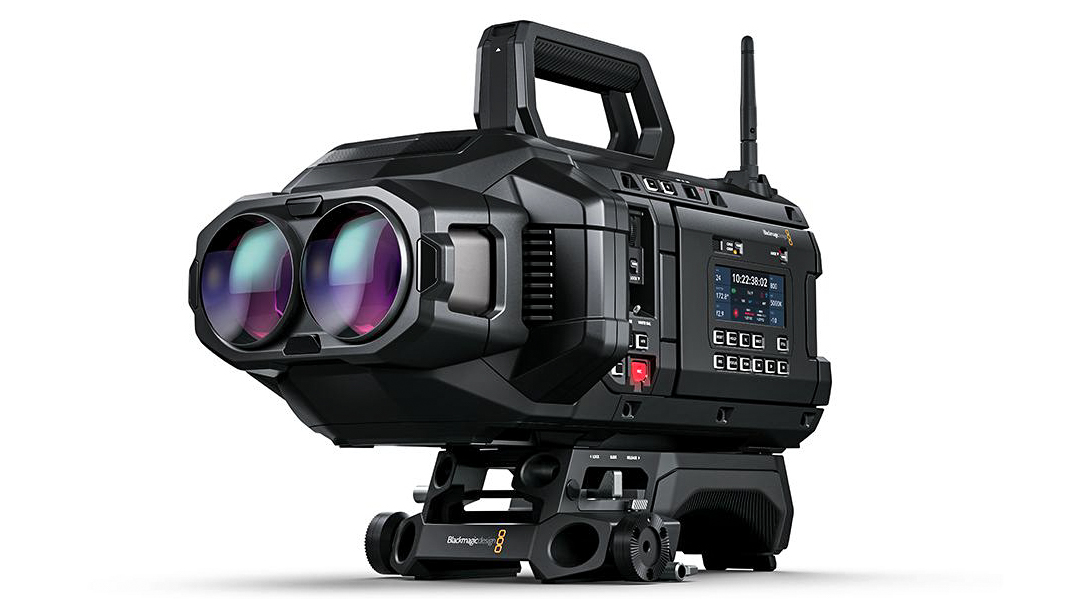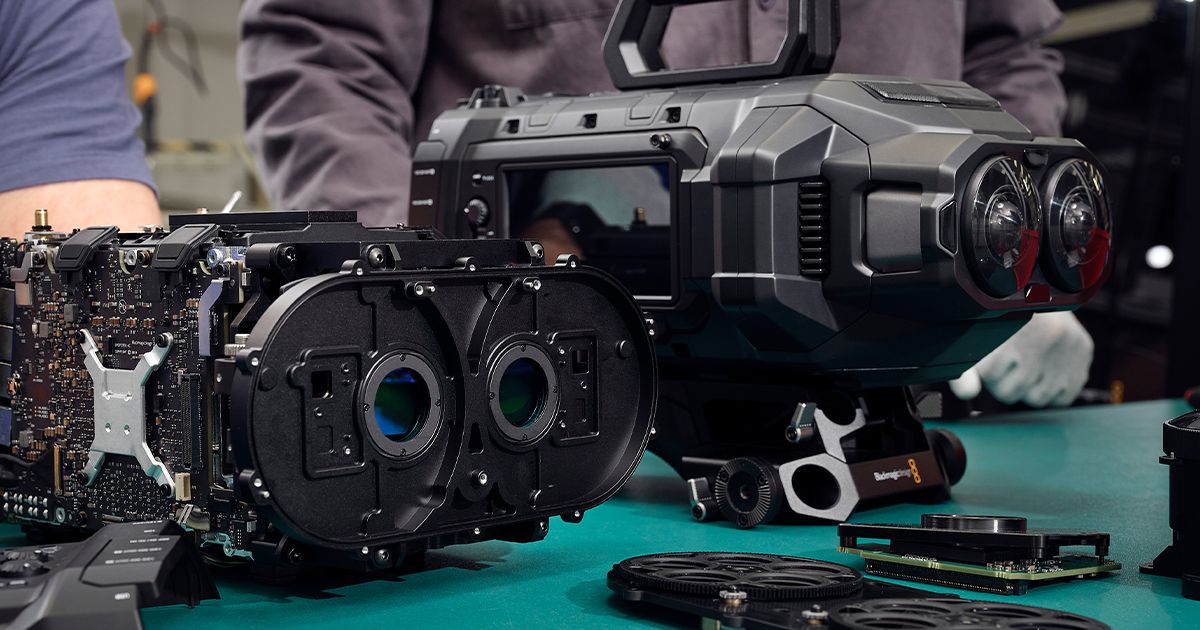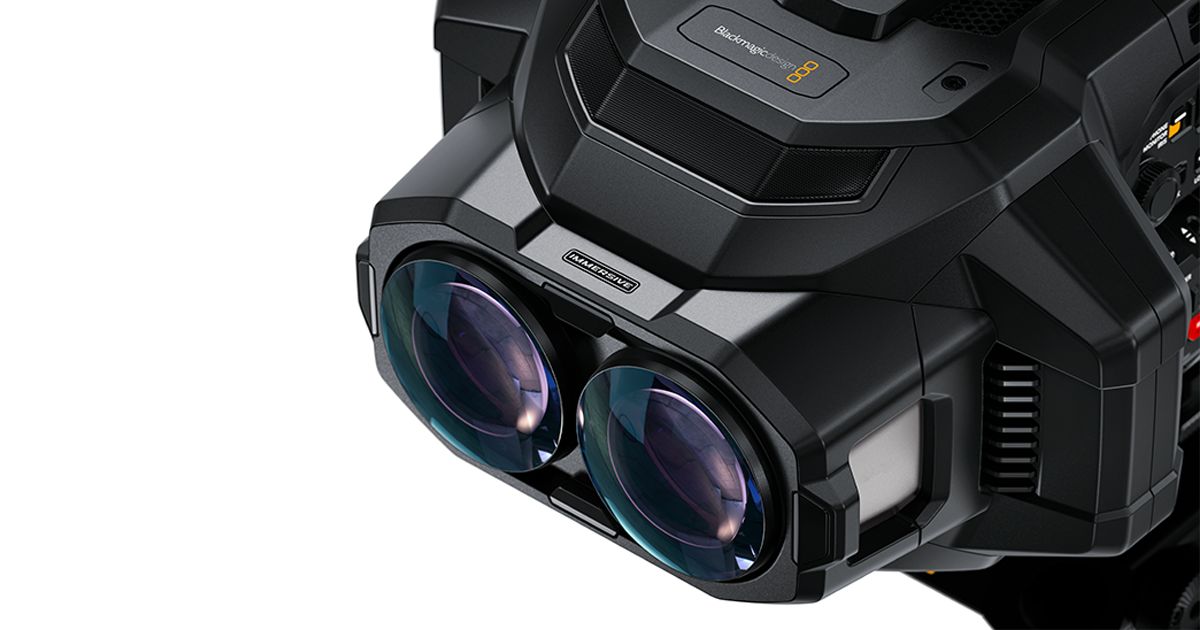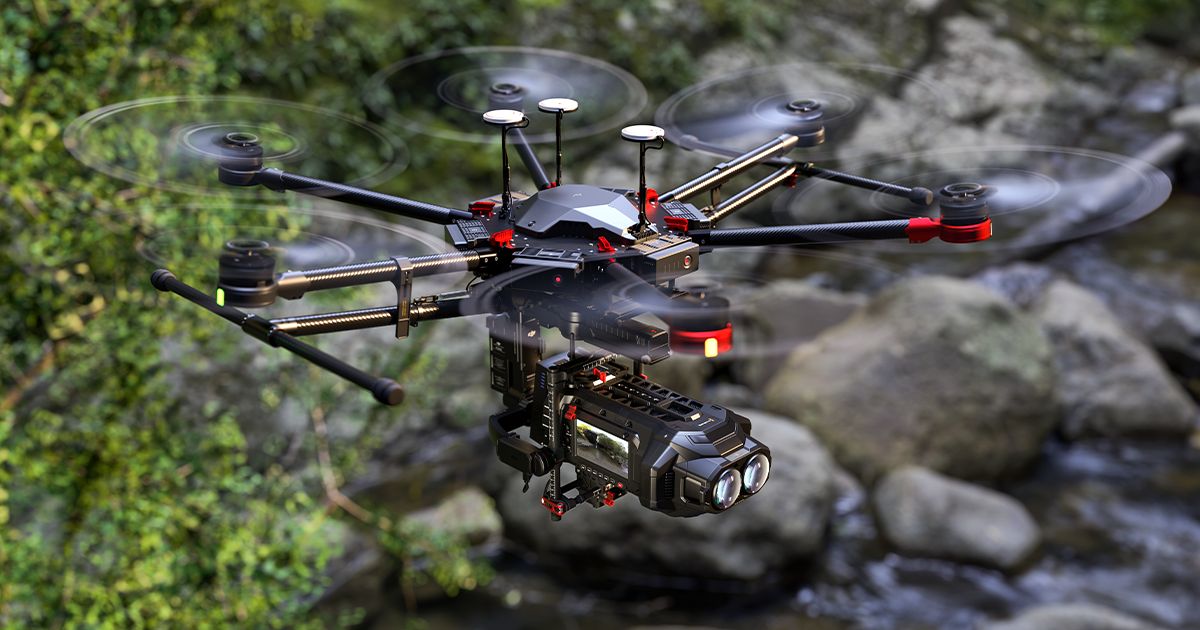
Apple announced a lot of software developments yesterday during the WWDC 2024, keynote which was introduced by Apple CEO Tim Cook. Apple developers (and fans) were shown briefly a new immersive cine camera in development from Blackmagic Design – the Blackmagic URSA Cine Immersive camera while Apple alluded to the idea of 3D content available through Vision OS for the Vision Pro augmented reality headset.
Since the conference, renowned cinema camera manufacturer Blackmagic Design has officially announced not just the world’s first commercial camera system designed to capture Apple Immersive Video, but an entire end-to-end workflow including updates to DaVinci Resolve which will introduce a new way to consume cinema.

Blackmagic Design CEO Grant Petty says, "We are thrilled to announce the first-ever commercial camera system and post-production software that supports Apple Immersive Video, giving professional filmmakers the tools to create remarkable stories with this powerful new format pioneered by Apple."
He continues, "Built on the new URSA Cine platform, URSA Cine Immersive features a fixed, custom, stereoscopic 3D lens system with dual 8K image sensors that can capture 16 stops of dynamic range. With this innovative system, filmmakers can record remarkable moments like action-packed scenes, unique perspectives, stunning landscapes, intimate performances, and more, all with incredible fidelity, offering viewers an unparalleled sense of realism and immersion."

Although still in development, Blackmagic has released some jaw-dropping camera specifications that place the viewer in the middle of the action.
The Blackmagic URSA Cine Immersive camera features a fixed dual custom lens system for shooting Apple Immersive Video for Apple Vision Pro, that comes preinstalled on the camera body. The lens and camera combination enables the user to capture an 8K stereoscopic 3D immersive image, with a resolution of 8160 x 7200 per eye.
The custom lens is specifically designed for Blackmagic's URSA Cine’s large format image sensor, capturing extremely accurate positional data. The immersive lens data is captured, mapped, calibrated, and stored per eye before being saved as a Blackmagic RAW file.
The new immersive camera looks aesthetically incredible, with its bug-like lens reminiscent of something straight out of a sci-fi movie, however, Blackmagic has well and truly removed the "fi". The body is made from a 'robust magnesium alloy chassis and lightweight carbon fiber polycarbonate composite skin', providing the user with a well-balanced and lightweight shooting experience.
The astonishing camera body design continues it includes a large fold-out 5-inch HDR touchscreen monitor on one side, and an external color status LCD on the other. On the other side of the camera features a 'dedicated assist station' with another 5-inch HDR touchscreen enabling crew to work around the camera and removing the necessity of external monitors.
The camera offers state-of-the-art cinematic technology with other notable features including a massive 16 stops of dynamic range, generation 5 color science with new film curve, 90 fps capture, Blackmagic Media Module 8TB for recording, and Wi-Fi, Ethernet, and mobile data network connections.

History has shown that a sticking point in capturing immersive video is the post-production and editing software, but as Blackmagic Design owns one of the leading video editing software on the market, DaVinci Resolve will undergo an overhaul to accommodate.
The update will introduce powerful new editing features enabling users to edit Apple Immersive Video that has been shot on the URSA Cine Immersive camera.
Blackmagic states, "A new immersive video viewer will let editors pan, tilt, and roll clips for viewing on 2D monitors or on Apple Vision Pro for an even more immersive editing experience. Transitions rendered by Apple Vision Pro will also be able to be bypassed using FCP XML metadata, giving editors clean master files. Export presets will enable quick output into a package which can be viewed directly on Apple Vision Pro".
We do not currently have a release date or price for either the camera or the update to DaVinci Resolve, however, we can expect them to be released 'later this year'.
For decades we have been told that immersive cinema is the future with 3D cinema seeming to have passed as soon as it arrived, however, this feels a bit different. This places the viewer in the middle of the action, providing a completely immersive and personal view, and with industry-leading manufacturers such as Blackmagic, Apple, and Canon developing tech for it, it may just change the future of consuming video content.
You may also be interested in our guides to the best cinema cameras, the best cinema lenses, and the best video editing software.







